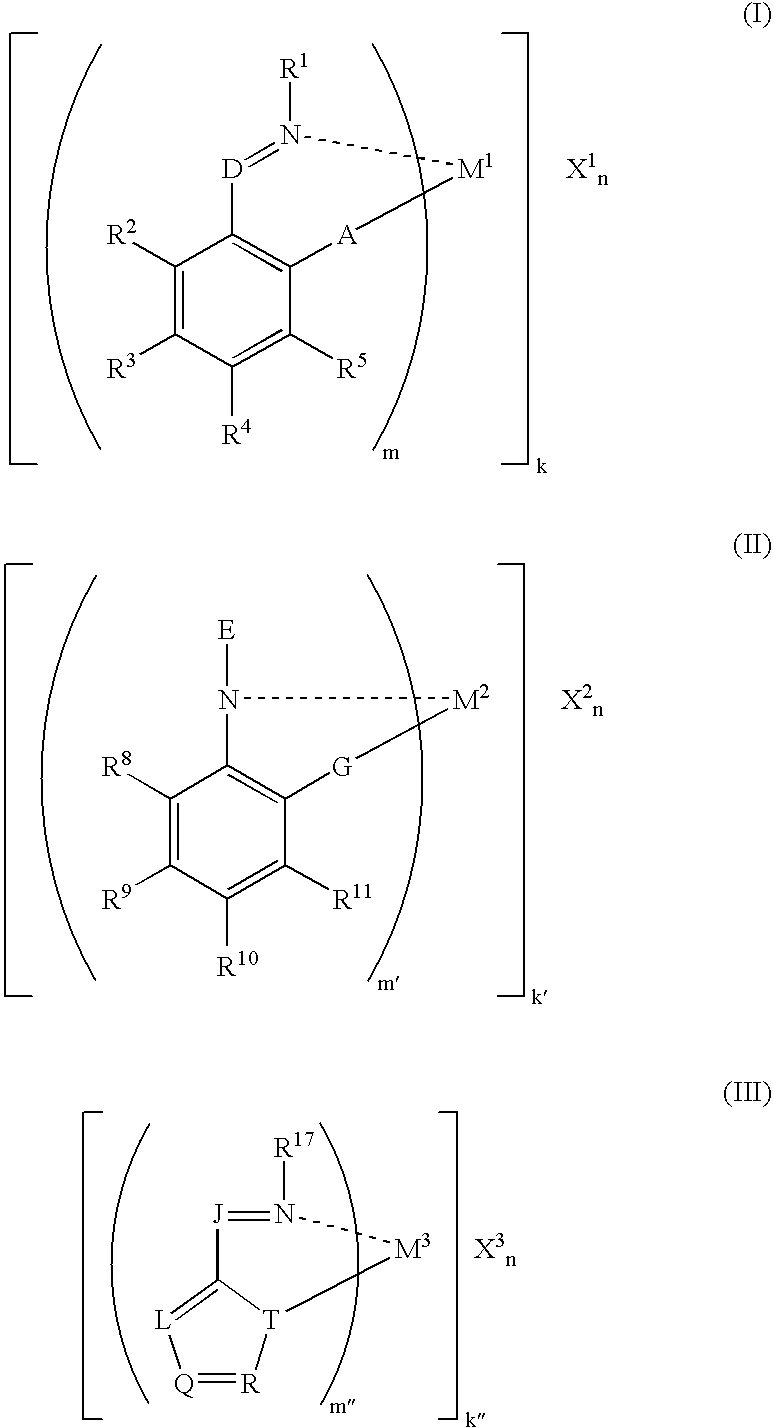Magnesium-containing carrier components and application thereof to olefin polymerization
a technology of olefin polymerization and carrier components, which is applied in the direction of catalyst activation/preparation, physical/chemical process catalysts, chemical/physical processes, etc., can solve the problems of difficult handling, and short duration of activity, so as to achieve high olefin polymerization activity and high polymerization activity , excellent powdery properties
- Summary
- Abstract
- Description
- Claims
- Application Information
AI Technical Summary
Benefits of technology
Problems solved by technology
Method used
Image
Examples
example 1
Preparation of Component (b1)
[0440] 95.2 g (1.0 mole) anhydrous magnesium chloride, 442 ml decane and 390.6 g (3.0 moles) 2-ethylhexyl alcohol were reacted at 130° C. for 2 hours to give a uniform solution (component (b1)).
Preparation of Component (b1-1)
[0441] A flask having an internal volume of 200 ml purged sufficiently with nitrogen was charged with 25 ml component (b1) (25 mmol in terms of magnesium atom) and 100 ml purified decane, and while the temperature of the solution was kept at 15° C. under stirring, 26 mmol triethyl aluminum diluted with purified decane was added dropwise thereto over 30 minutes. Thereafter, the temperature of the solution was increased to 80° C. over 120 minutes, and the mixture was reacted for additional 60 minutes. While the temperature was kept at 80° C., 49 mmol triethyl aluminum diluted with purified decane was again added dropwise thereto over 30 minutes, and the mixture was further reacted under heating for 60 minutes. After the reaction w...
example 2
Preparation of Component (b1-1-a2-140)
[0448] A flask having an internal volume of 200 ml purged sufficiently with nitrogen was charged with purified toluene so as to adjust the total volume to 128.4 ml and with component (b1-1) in an amount of 10 mmol in term of magnesium atom. While the sample was kept at 25° C. under stirring, 71.6 ml toluene solution (0.000699 mmol / ml) of component (a2-140) below was added dropwise thereto over 20 minutes. After the mixture was stirred for 1 hour, the solids were collected by filtration and washed sufficiently with toluene, and 100 ml purified decane was added thereto to give a decane slurry of component (b1-1-a2-140).
[0449] A part of the component (b1-1-a2-140) prepared by the above procedure was dried and examined for its composition, indicating 16.0 weight % magnesium, 2.7 weight % aluminum, 24.0 weight % 2-ethylhexoxy group, 48.0 weight % chlorine and 0.30 weight % zirconium. Similarly to Example 1, the analytical content of zirconium agre...
example 3
Preparation of Component (b1-1-a2-204)
[0452] A flask having an internal volume of 200 ml purged sufficiently with nitrogen was charged with purified toluene so as to adjust the total volume to 125.5 ml and with component (b1-1) in an amount of 10 mmol in term of magnesium atom. While the sample was kept at 25° C. under stirring, 74.5 ml toluene solution (0.000671 mmol / ml) of component (a2-204) below was added dropwise thereto over 20 minutes. After the mixture was stirred for 1 hour, the solids were collected by filtration and washed sufficiently with toluene, and 100 ml purified decane was added thereto to give a decane slurry of component (b1-1-a2-204).
[0453] Apart of the component (b1-1-a2-204) prepared by the above procedure was dried and examined for its composition, indicating 17.0 weight % magnesium, 2.7 weight % aluminum, 24.0 weight % 2-ethylhexoxy group, 50.0 weight % chlorine and 0.31 weight % zirconium. Accordingly, the molar ratio of magnesium to aluminum (Mg / Al) was...
PUM
 Login to View More
Login to View More Abstract
Description
Claims
Application Information
 Login to View More
Login to View More - R&D
- Intellectual Property
- Life Sciences
- Materials
- Tech Scout
- Unparalleled Data Quality
- Higher Quality Content
- 60% Fewer Hallucinations
Browse by: Latest US Patents, China's latest patents, Technical Efficacy Thesaurus, Application Domain, Technology Topic, Popular Technical Reports.
© 2025 PatSnap. All rights reserved.Legal|Privacy policy|Modern Slavery Act Transparency Statement|Sitemap|About US| Contact US: help@patsnap.com



